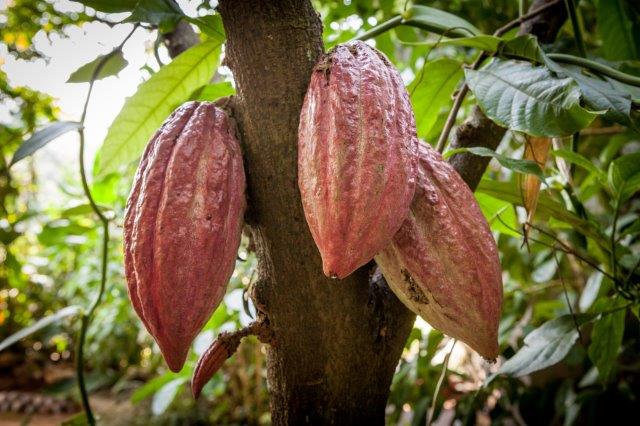FOR IMMEDIATE RELEASE
ACS News Service Weekly PressPac: December 06, 2017
‘Stressed out’ cocoa trees could produce more flavorful chocolate
“Environmental Growing Conditions in Five Production Systems Induce Stress Response and Affect Chemical Composition of Cocoa (Theobroma cacao L.) Beans”
Journal of Agricultural and Food Chemistry
Most people agree that chocolate tastes great, but is there a way to make it taste even better? Perhaps, according to scientists who looked at different conditions that can put a strain on cocoa trees. Reporting in ACS’ Journal of Agricultural and Food Chemistry, they say that although the agricultural method used to grow cocoa trees doesn’t matter that much, the specific weather conditions do.
Cocoa trees grow in hot and humid climates near the equator. Traditionally, these trees are raised together in mixed groves with other types of trees and plants that can cool the air and provide vital shade. The system, called agroforestry, provides a low-stress environment, increases nutrients in the soil and helps maintain ground water levels. But to gain higher yields, growers sometimes plant cocoa trees in solitary, “monocultural,” groves, in which the trees are exposed to stressful conditions. In response to the stress, tress produce antioxidants that can potentially counteract the damage, but these compounds also could change the quality characteristics of the beans. Wiebke Niether, Gerhard Gerold and colleagues from FiBL (Switzerland) wanted to find out whether differing growing methods can influence the chemical composition, and potentially the flavor, of cocoa beans.
The researchers harvested beans from five cocoa tree farms in Bolivia at the beginning and end of the dry season, which runs from April to September. The trees were raised in full-sun monocultural groves or in agroforest settings. The beans were fermented and dried, then analyzed. The research team detected only minor differences in the chemical composition among the beans harvested from the farms during the same weather conditions. Slightly more phenols and other antioxidant compounds were detected in beans taken from monoculturally grown trees than those that came from trees grown with agroforest methods, but the differences were not significant, according to the researchers. The larger contribution to chemical composition was the weather. Overall, the antioxidant content increased and fat content of the beans decreased during the dry season as temperatures rose and soil moisture dropped. The researchers say these differences could contribute to variability in cocoa bean flavor.
The authors acknowledge funding from Johannes-Hübner-Stiftung, Mrs. O.Riedl-Hübner, FiBL (Switzerland), the Biovision Foundation for Ecological Development, the Coop Sustainability Fund, the Liechtenstein Development Service and the Swiss Agency for Development and Cooperation.
Note: ACS does not conduct research, but publishes and publicizes peer-reviewed scientific studies.


